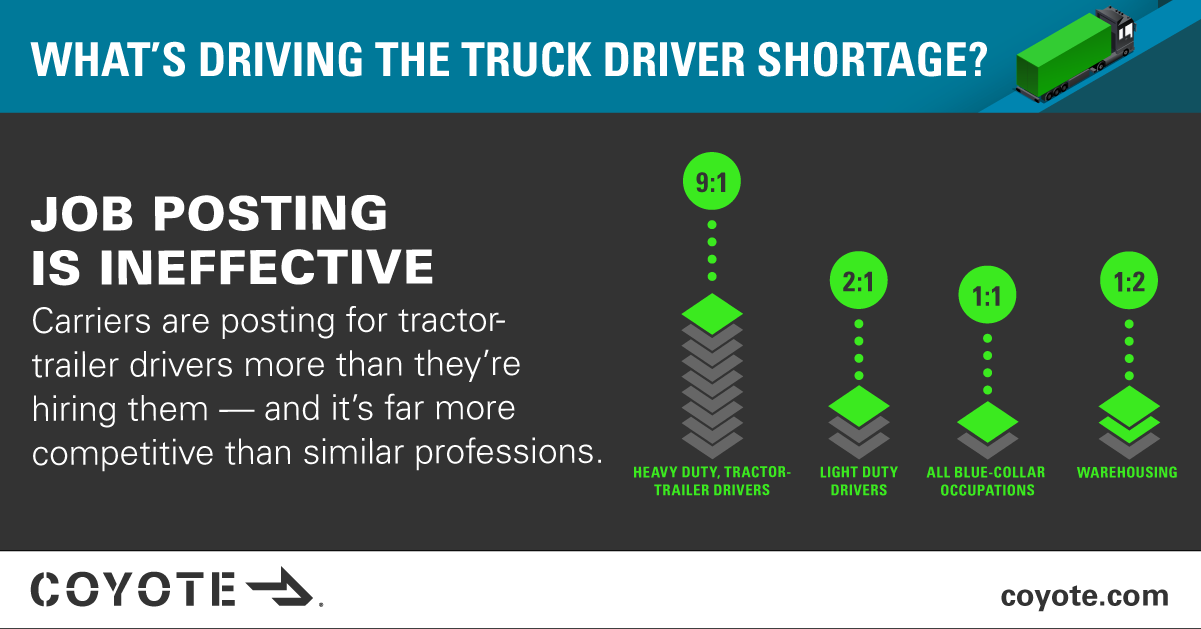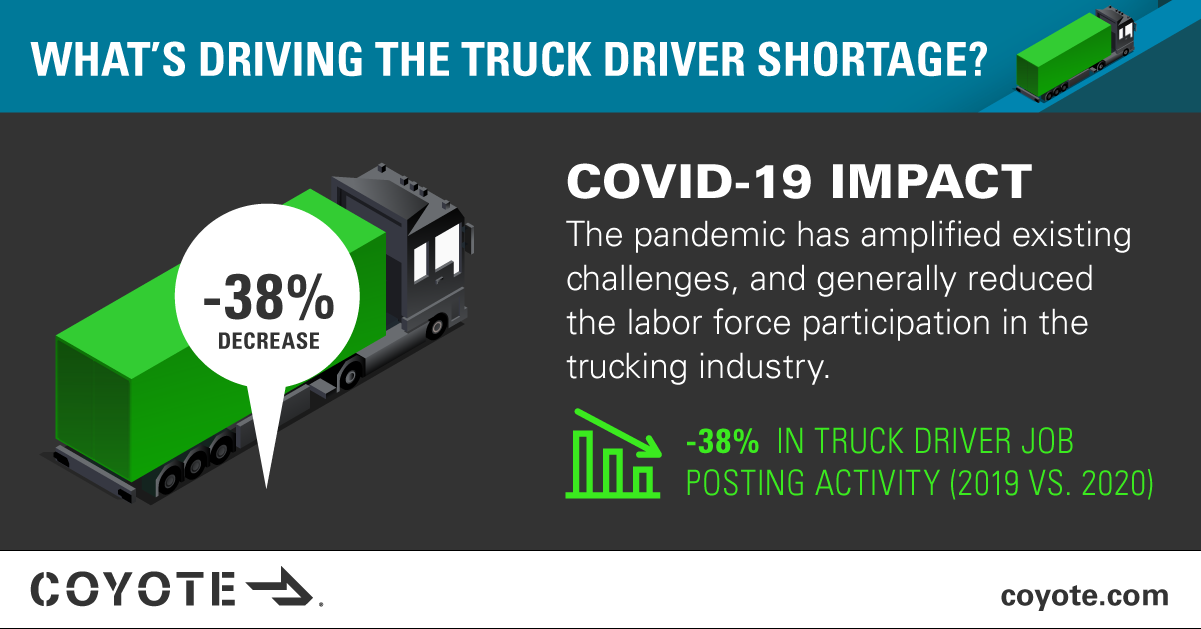Hiring Drivers in a Post-COVID-19 World: 3 Things Carriers Need to Know
If you are having a hard time recruiting commercial drivers — even though we’re in a time of high unemployment — you’re not alone.
It seems odd, right? Millions of people were suddenly out of work over the last year because of pandemic-induced lockdowns. And the national unemployment rate of 6.3% in January remains well above pre-pandemic levels.
You would think hiring would be easier.
Unfortunately, the truck driver shortage has been a consistent topic of conversation for several years — well before COVID-19.
We wanted to put some data behind the debate, so we teamed up with Emsi, a labor market research firm, to take a closer look at what’s going on.
Here’s just a few of the highlights we pulled from the full original research study.
1. The Competition for Labor Is Fierce
Labor for blue-collar professions is in high demand overall.
As industries like Construction and Manufacturing continue to recover, it will only increase. These types of jobs have always competed in a similar labor pool, and are a popular alternative to trucking.
Related: Learn the 6 key challenges driving the driver shortage in the full infographic.
Competition from Warehousing
Some of the biggest competition for trucking companies is in the logistics industry, specifically warehousing. This is especially true for younger talent: 57% of drivers are over 45 years old, while 62% of warehouse employees are under 45.
None of these sectors have the same barrier to entry that trucking does: a commercial driver’s license (CDL).
Job Posting Activity vs. Hiring
If you feel like you have to work harder to fill a seat in a class 8 cab than other professions, the data backs you up. The study found that in order to hire a semi-truck driver, it takes 9x the amount of job postings compared to other blue-collar jobs.
How many job postings are there for every 1 person that gets hired?
- All Blue-Collar: 1
- Warehousing: 0.5
- Light-Duty Drivers: 2
- All Drivers: 6
- Heavy Duty / Semi-Truck Drivers: 9
2. How COVID-19 is Impacting the Labor Market
It’s impossible to look at the current driver shortage situation without looking at how the pandemic has disrupted all labor markets — especially for more entry level (sub $20 per hour) roles.
Labor force participation has taken a nosedive, meaning more people weren’t actively looking for a job and may have grown frustrated with their employment prospects.
It seems strange that with high unemployment and a recession, participation would actually drop, but there are four key factors driving down labor force participation rate.
4 Ways COVID-19 Is Driving Down Labor Force Participation
- Many furloughed workers may believe that they will eventually get their jobs back, (although this feeling is likely fading now).
- Historic Government benefits (expanded unemployment, stimulus checks) have kept people in the lower wage categories from quickly returning to the labor market.
- Many people have young children at home — preventing them from entering the labor market while schools have in remote learning.
- Although vaccine distribution has started, many people fear contracting the virus, which presents a higher risk for people that cannot work from home (i.e. drivers).
3. How to Improve Recruiting & Retention
Driver recruitment and retention have long been challenges for trucking companies — 28% of carriers ranked them in the top three of overall business challenges.
And as the workforce gets older, it only gets more important. While our study did find data to suggest that wage growth has stalled, addressing the shortage is not as simple as increasing pay (which is often not an option).
But what else can carriers do besides raising pay?
Here are a few core obstacles to recruiting and retention we found in the study, and a few strategies to start addressing them.
4 Obstacles, 4 Strategies to Overcome Them
- Life on the road is difficult
Strategy: Invest in workers safety and quality of life - Limited upward mobility for drivers
Strategy: Establish and communicate a career development program - Higher barriers to entry
Strategy: Conduct more on-the-job training - Increased market volatility due to COVID-19
Strategy: Follow truckload market forecasts
Dive Deeper into the Research & Next Steps
For an in-depth look at the data on the commercial driver shortage and some actionable steps you can take to hire and retain new talent, download the full research paper.
Download the Full Research Study
If you're looking for more information on how to elevate your talent acquisition strategy for drivers or other positions, Emsi's labor market data and experts can guide you through the best ways to attract and source talent.






